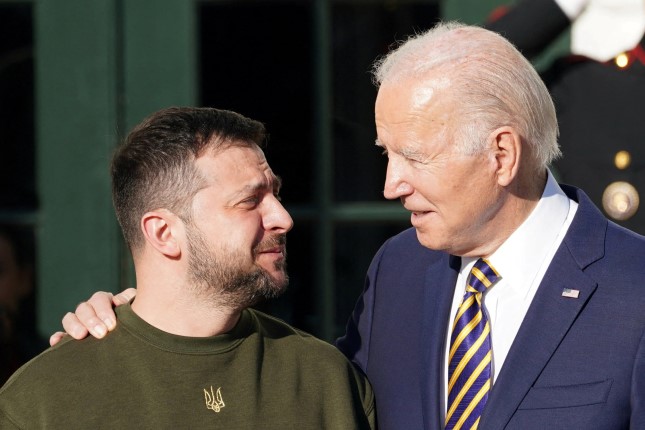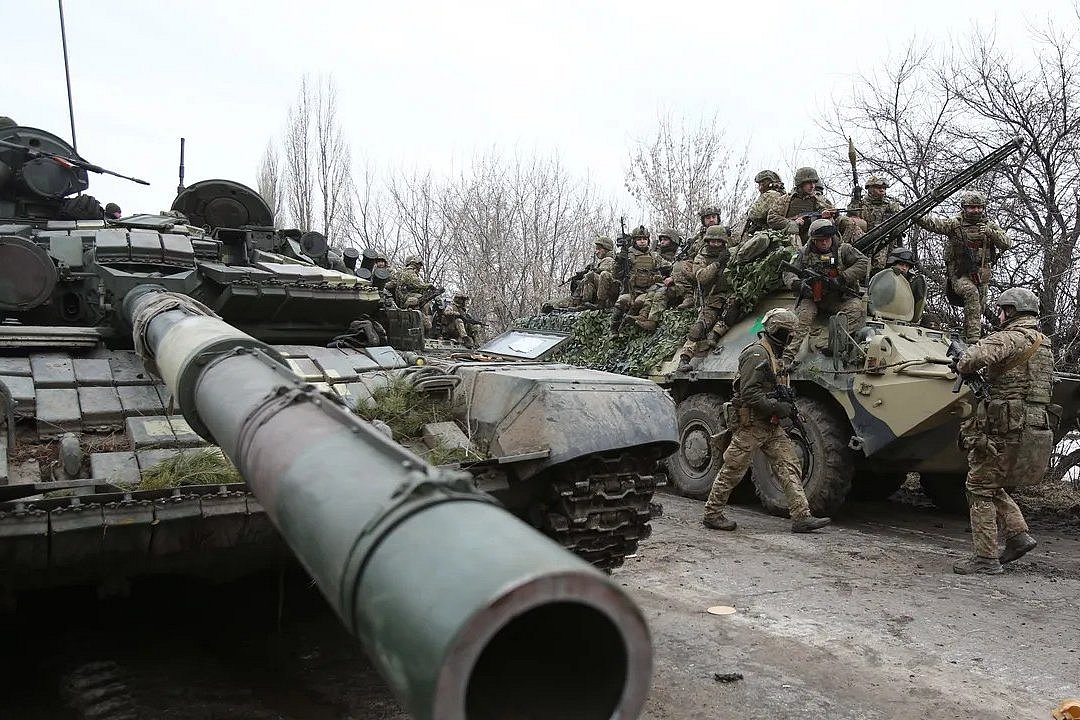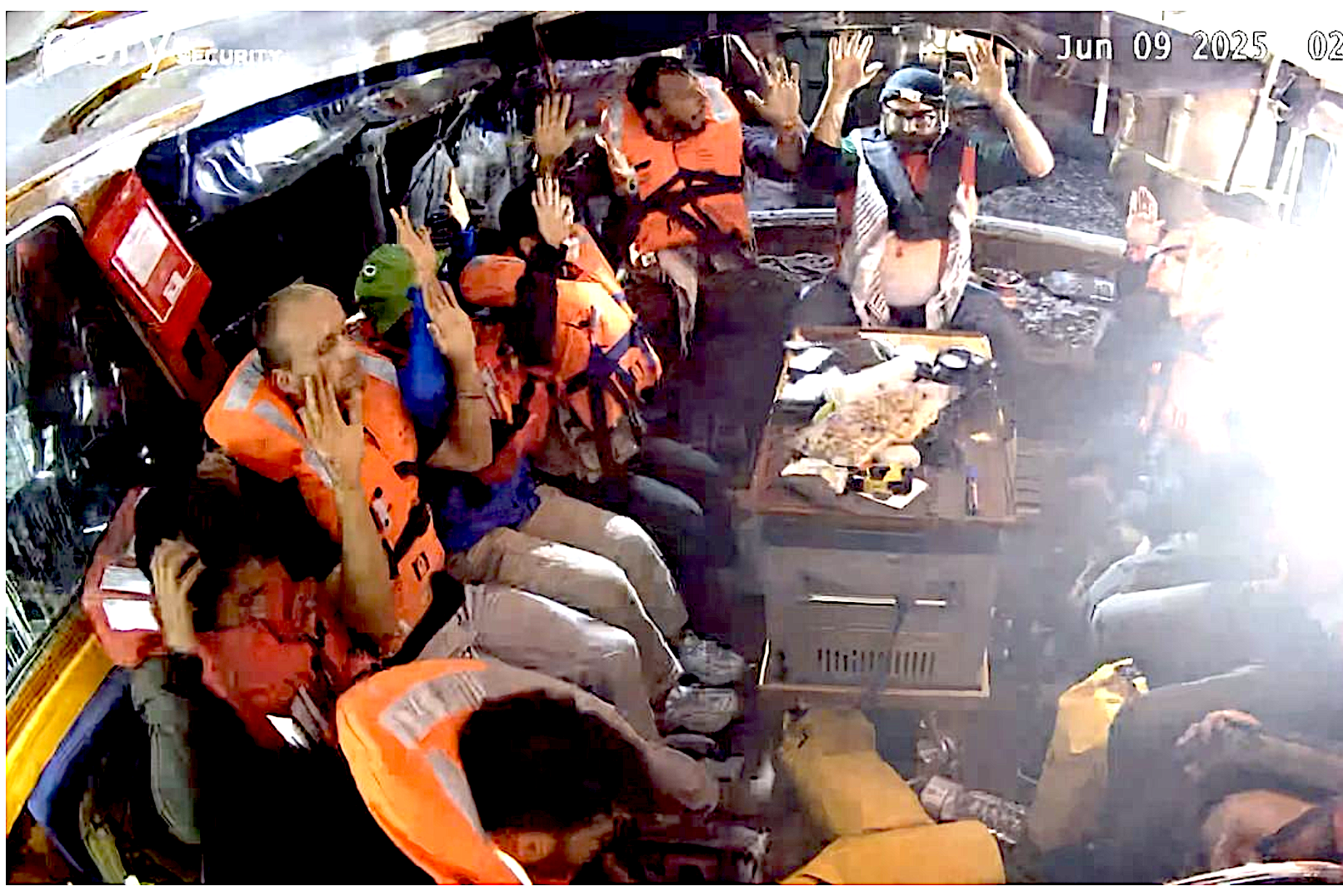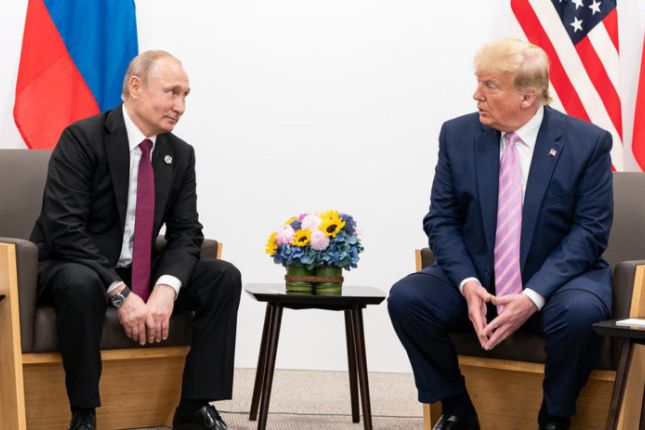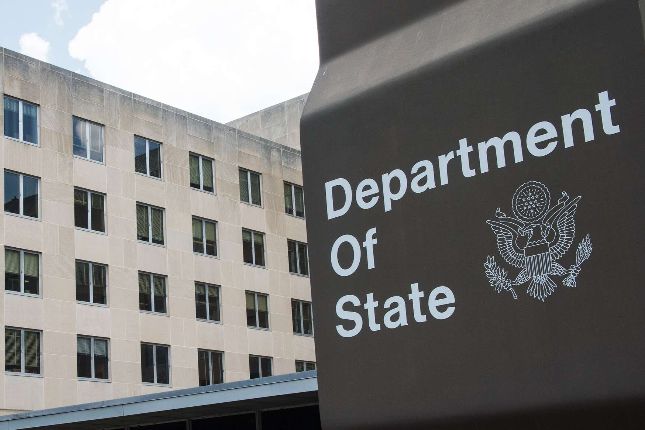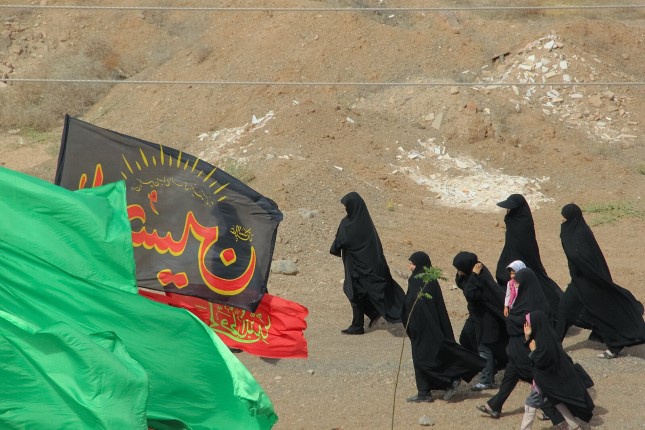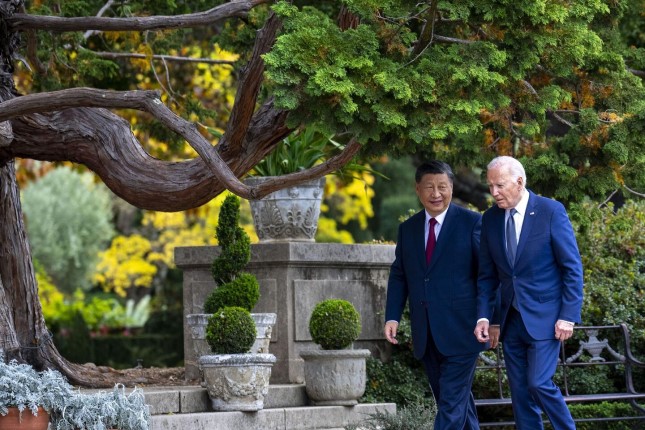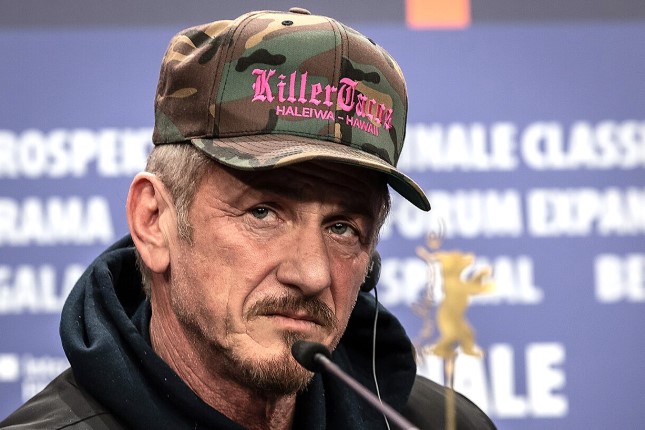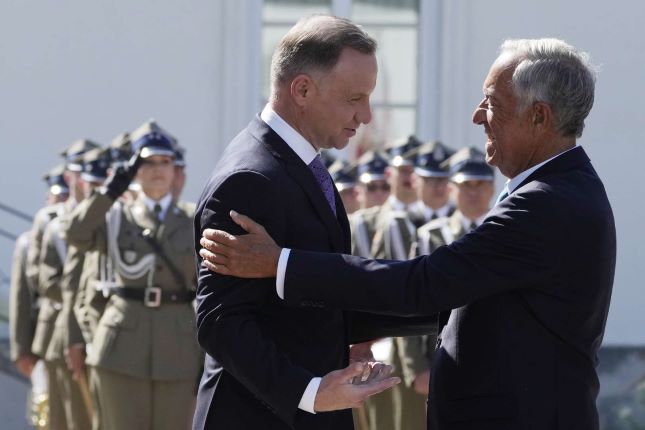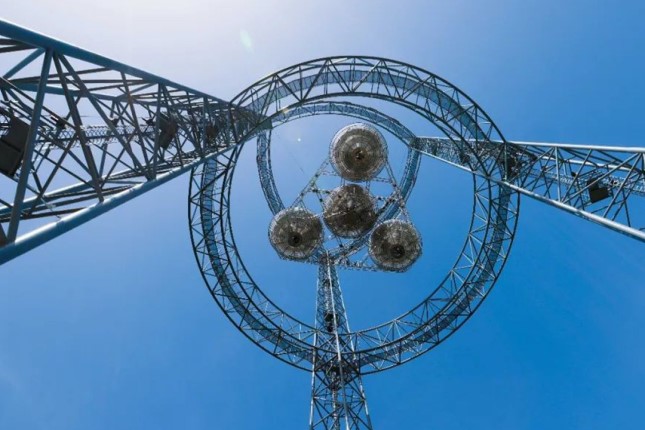On Monday, Ukraine killed three Russian soldiers in a drone attack on Engels airbase near Saratov, hundreds of miles from the border with Ukraine, following the return of Ukrainian President Volodymyr Zelensky from Washington.
Last week, Zelensky addressed the US Congress in person, urging the United States, which finances and directs Ukraine’s war effort, to support his military forces until the achievement of “absolute victory.”
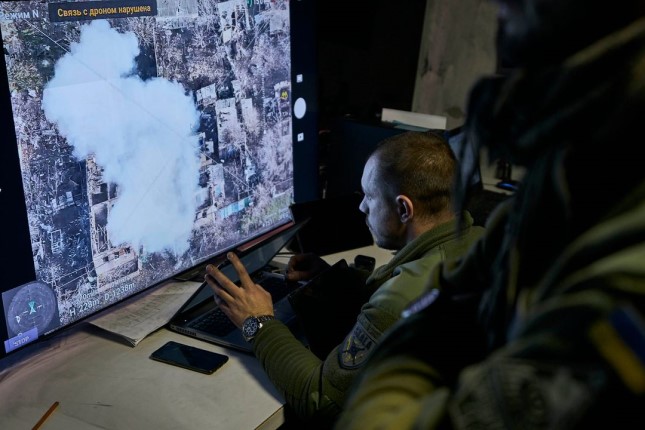
Ukrainian soldiers watch a drone feed from an underground command center in Bakhmut, Donetsk region, Ukraine, Sunday, Dec. 25, 2022. Photo: AP Photo / Libkos.
On Friday, the day after Zelensky spoke, US President Joe Biden signed the National Defense Authorization Act (NDAA), which increases the level of US military spending by $88 billion over the previous year and doubles the amount of money allocated to the Ukraine war to date.
The day before he signed the budget, Biden announced that he would send a Patriot missile battery to Ukraine, which is the most advanced missile system sent by the United States to Ukraine to date.
Later this week, Biden will sign the omnibus budget legislation that actually appropriates the money to finance the ongoing war with Russia.
Ukraine’s latest attack inside Russia sent a clear signal on behalf of Washington that the war will only intensify as it goes into 2023.
A glimpse into the Biden administration’s thinking was provided by an article in the New York Times reporting the US rationale for encouraging increasingly escalatory actions.
“Ukraine is striking more boldly at targets deep in Russian territory because Kyiv has assessed that Moscow’s military is fighting at the limits of its conventional capabilities,” the Times reported.
It continues, “With the sense widespread in Kyiv among officials and civilians that, short of nuclear intensification, Russia cannot do much more to Ukraine that it is not already doing, the allure of curtailing Moscow’s missile capabilities at home outweighs any escalatory concern.”
The newspaper quoted a Ukrainian colonel, who concluded, “There is no reaction… Why? Because the Russians simply do not have capacity to do so.”
Critically, the Times observed that “American officials clarified they will not object to Ukraine striking back with its own weaponry.”
So far, the Putin government has responded to the provocations of the United States and its proxy in Kiev by unleashing repeated airstrikes against Ukraine’s power infrastructure, with devastating consequences for the people of Ukraine. As many as one-quarter of the country’s population is currently without power, Zelensky said in a speech this week.
But despite the insistence of the Times that Russia will not respond with its own escalation, the events of the past week have sparked a major change in tone on the part of Russian officials.
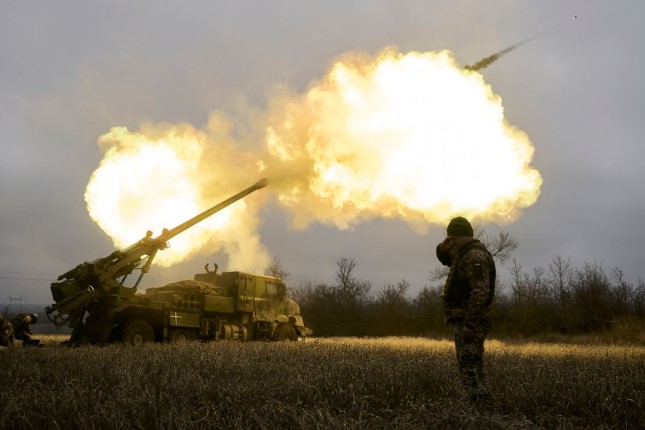
Ukrainian soldiers fire a French-made CAESAR self-propelled howitzer towards Russian positions near Avdiivka, Donetsk region, Ukraine, Monday, Dec. 26, 2022. Photo: AP Photo / Lib's.
On December 21, the same day Zelensky visited Washington, Russian military officials announced a major military reorganization and a 30 percent increase in the size of Russia’s army.
On December 22, Russian President Vladimir Putin referred to the conflict—which has up to this point been referred to as a “special military operation”—as a war.
“Our goal is not to spin this flywheel of a military conflict, but, on the contrary, to end this war,” Putin said at a press conference on Thursday.
On December 26, Russian Foreign Minister Sergei Lavrov raised the prospect of regime change in Kiev, saying, “Our proposals for the demilitarization and denazification of the territories controlled by the [Ukrainian] regime, the elimination of threats to Russia’s security emanating from there, including our new lands, are well known to the enemy… The point is simple: Fulfil them for your own good. Otherwise, the issue will be decided by the Russian army.”
On December 25, Dmitry Medvedev, the deputy chairman of the Security Council of the Russian Federation, for the first time suggested that Russia might carry out a preemptive strike against the US and its allies.
“The only thing that stops our enemies today is the understanding that Russia will be guided by the Fundamentals of the State Policy of the Russian Federation in the field of nuclear deterrence. And if there is a real threat, it will act on them,” Medvedev wrote in an 4,500-word article for the Rossiiskaya Gazeta.
“The trouble is that in this case, no one will subsequently figure out what it was—a retaliatory strike or a preventive one. This, of course, frightens Western benefactors, who for a long time inspired the Ukrainian political rabble with the illusion of invulnerability and impunity in exchange for complete obedience. Therefore, the Western world is balancing between a burning desire to maximally humiliate, offend, dismember and destroy Russia, on the one hand, and the desire to avoid a nuclear apocalypse, on the other.”
He asked, “Is the West ready to unleash a fully-fledged war against us, including a nuclear war, at the hands of Kyiv?”
While Zelensky had previously raised the prospect of a preemptive nuclear strike against Russia, this is the first time Russian officials had used such language with regard to the US.
“What should NATO do? Eliminate the possibility of Russia using nuclear weapons,” Zelensky said on October 7. “We need preventive strikes, so they know what will happen to them if they use nukes, and not the other way around.”
Critically, Zelensky made these comments the same day that Biden warned that human civilization faces the “prospect of Armageddon” over the escalation of the war.
Ahead of Zelensky’s visit to the US last week, the Ukrainian president doubled down on his statements that Ukraine’s goal in the war is to retake Crimea. While in 2021 Ukraine pledged to militarily retake the territory, which was annexed by Russia in 2014, Ukrainian officials had not publicly made this demand in the earlier part of the war in order to portray their role in the conflict as defensive.
Ahead of his address to Congress, Zelensky said in a television address, “This is our Luhansk region, this is our south of Ukraine, this is our Crimea.” He added, “Ukraine will leave nothing of its own to the enemy.”
In an interview last week with the Economist, Zelensky was asked about his evolving definition of victory.
The magazine inquired, “At the start of the war we asked you: ‘What is victory?’ And your answer was: ‘Saving as many lives as possible. Because land is good, but it is only territory. Without people it means nothing.’ How has your sense of victory changed?”
In response, Zelensky doubled down on his declaration that Ukraine’s aim is to retake Crimea. Asked what “price would be too high” for Ukraine to advance “to the 1991 borders,” Zelensky made clear that his aim was to fully retake the peninsula, no matter the cost.
With the United States massively expanding its involvement in the conflict, the world faces the horrifying prospect that the 200,000 military and civilian casualties suffered by both sides in the course of the war in 2022 could be just a downpayment.
Main photo: Zelensky and Biden in Washington, 21.12.2022 © AP Photo.
Source: World Socialist Web Site.
